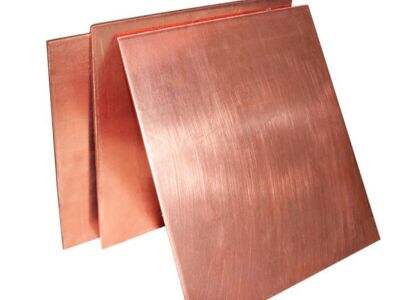What is C11000 Copper C10100 Copper?
C11000 Copper, also known as electrolytic tough pitch (ETP) copper, is a very pure form of copper, with small oxygen content. It is this copper that is prized for its excellent electrical conductivity and is suitable for use in electrical wires, heat exchangers, and for various other industrial uses that require the highest electrical conductivity.
C10100 Copper, also known as OFE copper, has a higher purity than C11000 resulting in superior electrical conductivity and low resistivity; this copper is typically used for correction plates and mic holes. This type of copper is extremely pliable and has good thermal/electrical conductivity. C10100 Copper is commonly used in electronic tubes, electronic parts, and other high- tech jobs where pure copper is necessary.
What Is the Difference Between C11000 and C10100 Copper in Application?
In industrial applications such as this, the choice of C11000 Copper vs. C10100 Copper depends on what you require for your project. PRICE AND COST analysis) This is a clear advantage, making C11000 Copper the more economical choice when purity is not critical. But C10100 Copper has greater conductivity, and is resistant to rust, so it’s better for delicate electronic parts and areas where oxidation is a worry.
Preventing Rust with C11000 vs C10100 Copper
For preventing rust, C10100 copper plate makes a little harder than C11000 Copper due to less oxygen. Copper can oxidize when exposed to oxygen, resulting in rust. Less oxygen in C10100 Copper makes it more corrosion resistant than C11000 Copper.
Deciding On Cost Vs. Effectiveness
When choosing between C11000 Copper and C10100 Copper for industrial purposes, considering the trade offs between cost and the ultimate performance of the metal system is a critical piece of the decision-making process. C11000 Copper is less expensive, though it may not be suitable for applications that require high conductivity and purity. Copper C10100, on the other hand, wins the race but costs more. By assessing your requirements, as well as your budget, you can determine a suitable match for your project.
C11000 and C10100 Copper Pros and Cons
Summary: So what does this all mean with C11000 copper sheet and C10100 Copper and which one is better for industrial use? C11000 Copper is less expensive, but does not conduct well as C10100 Copper though could be sufficient depending on your application requirements. C10100 Copper is better and more expensive. Good Luck in your project and I hope with understanding between the two of what the differences are – you can make a good decision for your project. There is no dearth in the variety of copper alloys Xinye metal can offer your needs, so take a look at all the alternatives you have before making a decision.

